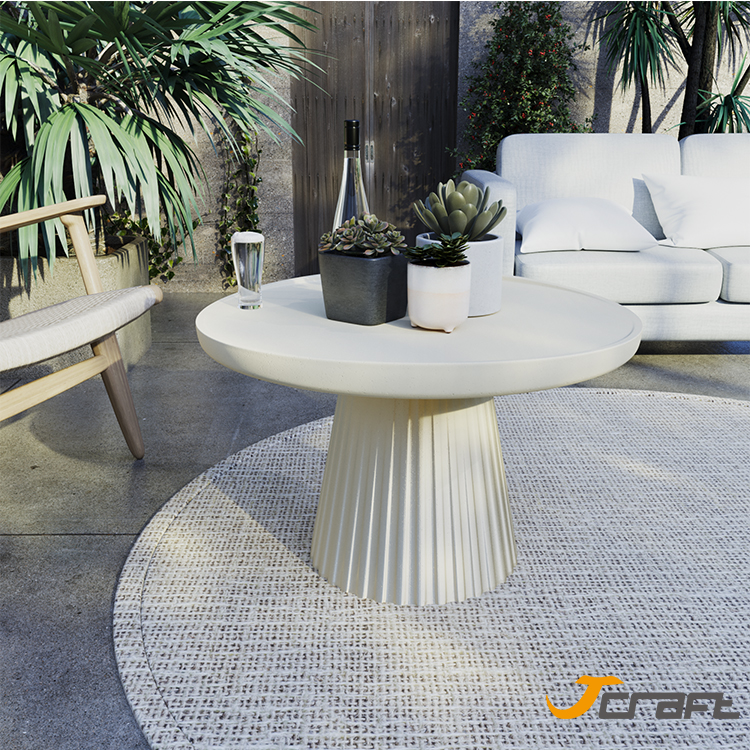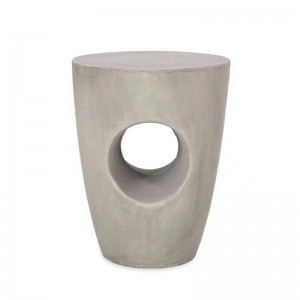white outdoor concrete side table tea table coffee table
What is GRC?
GFRC is similar to chopped fiberglass (the kind used to form boat hulls and other complex three-dimensional shapes), although much weaker. It’s made by combining a mixture of fine sand, cement, polymer (usually an acrylic polymer), water, other admixtures and alkali-resistant (AR) glass fibers. Many mix designs are available online, but you’ll find that all share similarities in the ingredients and proportions used.
Some of the many benefits of GFRC include:
Ability to Construct Lightweight Panels
Although the relative density is similar to concrete, GFRC panels can be much thinner than traditional concrete panels, making them lighter.
High Compressive, Flexural and Tensile Strength
The high dose of glass fibers leads to high tensile strength while the high polymer content makes the concrete flexible and resistant to cracking. Proper reinforcing using scrim will further increase the strength of objects and is critical in projects where visible cracks are not tolerable.
The Fibers in GFRC- How They Work
The glass fibers used in GFRC help give this unique compound its strength. Alkali resistant fibers act as the principle tensile load carrying member while the polymer and concrete matrix binds the fibers together and helps transfer loads from one fiber to another. Without fibers GFRC would not possess its strength and would be more prone to breakage and cracking.
Casting GFRC
Commercial GFRC commonly uses two different methods for casting GFRC: spray up and premix. Let’s take a quick look at both as well as a more cost effective hybrid method.
Spray-Up
The application process for Spray-up GFRC is very similar to shortcrete in that the fluid concrete mixture is sprayed into the forms. The process uses a specialized spray gun to apply the fluid concrete mixture and to cut and spray long glass fibers from a continuous spool at the same time. Spray-up creates very strong GFRC due to the high fiber load and long fiber length, but purchasing the equipment can be very expensive ($20,000 or more).
Premix
Premix mixes shorter fibers into the fluid concrete mixture which is then poured into molds or sprayed. Spray guns for premix don’t need a fiber chopper, but they can still be very costly. Premix also tends to possess less strength than spray-up since the fibers and shorter and placed more randomly throughout the mix.
Hybrid
One final option for creating GFRC is using a hybrid method that uses an inexpensive hopper gun to apply the face coat and a handpacked or poured backer mix. A thin face (without fibers) is sprayed into the molds and the backer mix is then packed in by hand or poured in much like ordinary concrete. This is an affordable way to get started, but it is critical to carefully create both the face mix and backer mix to ensure similar consistency and makeup. This is the method that most concrete countertop makers use.













